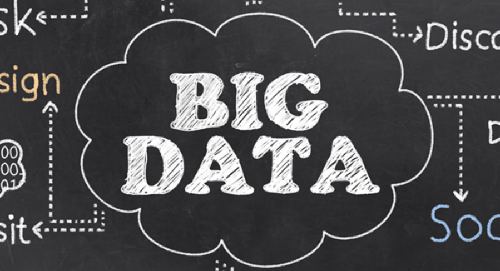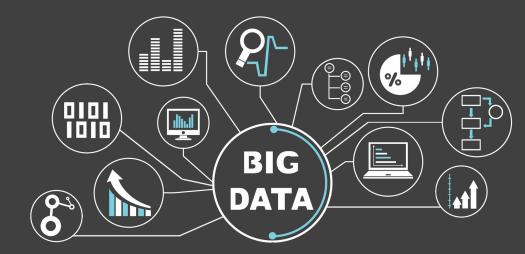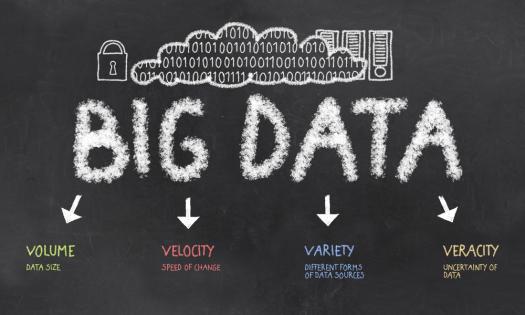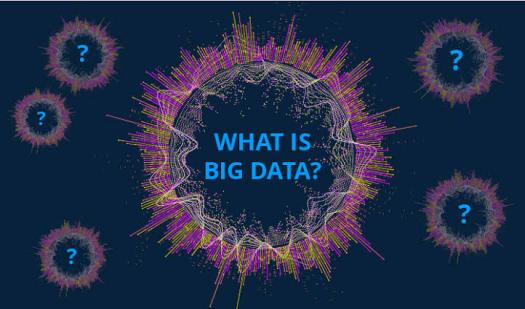Big Data Quiz: How Much Do You Know About Big Data?
(397).jpg)
Here is an interesting Big Data quiz that is designed to test your basic knowledge of Big Data. Are you aware of the term Big Data? It is a phrase used to describe a massive volume of both structured and unstructured data that is very large in size and is difficult to process using traditional database and software techniques. If you think you have a really good knowledge of this subject, then you must take this quiz and see how well you can score. Are you ready to take the test? Let's start then.
- 1.
The word 'Big data' was coined by __________.
- A.
Roger Mougalas
- B.
John Philips
- C.
Simon Woods
- D.
Martin Green
Correct Answer
A. Roger MougalasExplanation
Roger Mougalas is credited with coining the term "Big data".Rate this question:
-
- 2.
The three Vs of Big Data Include the following except:
- A.
Velocity
- B.
Versatile
- C.
Volume
- D.
Variety
Correct Answer
B. VersatileExplanation
The three Vs of Big Data include Velocity, Volume, and Variety. These three aspects are commonly used to describe the characteristics of Big Data. Velocity refers to the speed at which data is generated and processed. Volume refers to the vast amount of data being generated and collected. Variety refers to the different types and formats of data that are being generated. However, "Versatile" is not one of the three Vs commonly associated with Big Data.Rate this question:
-
- 3.
The most widely used Apache project for processing big data is ____________.
- A.
Apache Beam
- B.
Apache Cassandra
- C.
Apache Hadoop
- D.
Apache Spark
Correct Answer
D. Apache SparkExplanation
Apache Spark is the most widely used Apache project for processing big data. It provides a fast and general-purpose cluster computing system that is designed for large-scale data processing. Spark offers a wide range of libraries and tools for various data processing tasks, including batch processing, real-time streaming, machine learning, and graph processing. Its ability to handle diverse workloads and its efficient in-memory processing capabilities have made it a popular choice among developers and organizations dealing with big data.Rate this question:
-
- 4.
The basic features of big data are _________________.
- A.
6
- B.
4
- C.
3
- D.
5
Correct Answer
C. 3 -
- 5.
The word 'Big Data' was coined in the year _________.
- A.
2000
- B.
1970
- C.
1998
- D.
2005
Correct Answer
C. 1998Explanation
The word 'Big Data' was coined in the year 1998. This term was first used by scientists to describe the large and complex datasets that were becoming increasingly common in various fields. The term gained popularity in the early 2000s as the amount of data being generated and collected grew exponentially. Since then, 'Big Data' has become a buzzword in the tech industry and is widely used to refer to the analysis and extraction of valuable insights from large datasets.Rate this question:
-
- 6.
Is Big Data a Volume or a Technology?
- A.
Technology
- B.
Both
- C.
Volume
- D.
Not sure
Correct Answer
B. BothExplanation
Big Data is considered both a volume and a technology. The term "Big Data" refers to the large amount of data that is generated and collected from various sources. It encompasses the massive volume of data that cannot be easily managed or processed using traditional methods. Additionally, Big Data is also a technology that involves the use of advanced tools and techniques to analyze and extract meaningful insights from this large volume of data. Therefore, the correct answer is both.Rate this question:
-
- 7.
Concerning the Forms of Big Data, which one of these is odd?
- A.
Structured
- B.
Unstructured
- C.
Processed
- D.
Semi-Structured
Correct Answer
C. ProcessedExplanation
The question asks for the odd one out among the given options concerning the forms of big data. Structured, unstructured, and semi-structured data are all types of data that are commonly associated with big data. However, processed data is not a form of big data but rather the result of analyzing and manipulating the raw data. Therefore, the correct answer is processed.Rate this question:
-
- 8.
The form of data that is structured but is not defined is ___________.
- A.
Processed
- B.
Semi-structured
- C.
Structured
- D.
Unstructured
Correct Answer
B. Semi-structuredExplanation
Semi-structured data refers to data that has some organization or structure, but it does not adhere to a strict schema or predefined format. This means that although there is some level of organization, the data does not have a rigid structure like traditional structured data. It may contain tags, labels, or other markers that provide some level of organization, but it is not fully defined. This type of data often includes formats like XML or JSON, which allow for flexibility in the organization and representation of the data.Rate this question:
-
- 9.
The characteristic of big data that refers to the type and nature of data is ____________.
- A.
Volume
- B.
Variability
- C.
Versatility
- D.
Variety
Correct Answer
D. VarietyExplanation
The characteristic of big data that refers to the type and nature of data is variety. This means that big data encompasses a wide range of data types, including structured, unstructured, and semi-structured data. It includes data from various sources such as text, images, videos, social media posts, sensor data, and more. The variety of data in big data sets poses challenges in terms of storage, processing, and analysis, but also provides opportunities for gaining valuable insights from diverse data sources.Rate this question:
-
- 10.
Big Data applications benefit the media and entertainment industry by ____________.
- A.
Predicting what the audience wants
- B.
Ad targeting
- C.
Scheduling optimization
- D.
All of the above
Correct Answer
D. All of the aboveExplanation
Big Data applications benefit the media and entertainment industry in multiple ways. Firstly, by analyzing large amounts of data, these applications can predict what the audience wants, allowing companies to tailor their content and offerings accordingly. Secondly, Big Data can be used for ad targeting, helping media and entertainment companies to deliver personalized advertisements to specific demographics or individuals. Lastly, scheduling optimization is another benefit, as Big Data can help optimize the timing and placement of content to maximize viewership and engagement. Therefore, the correct answer is "All of the above."Rate this question:
-
Quiz Review Timeline +
Our quizzes are rigorously reviewed, monitored and continuously updated by our expert board to maintain accuracy, relevance, and timeliness.
-
Current Version
-
Mar 22, 2023Quiz Edited by
ProProfs Editorial Team -
Jun 12, 2019Quiz Created by
AdewumiKoju
 Back to top
Back to top












